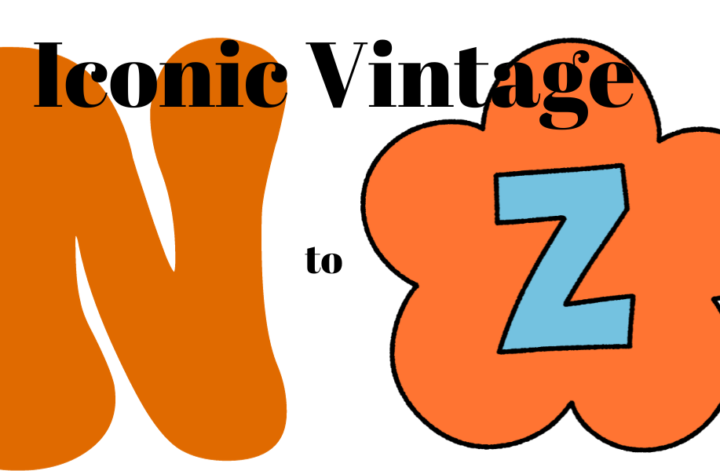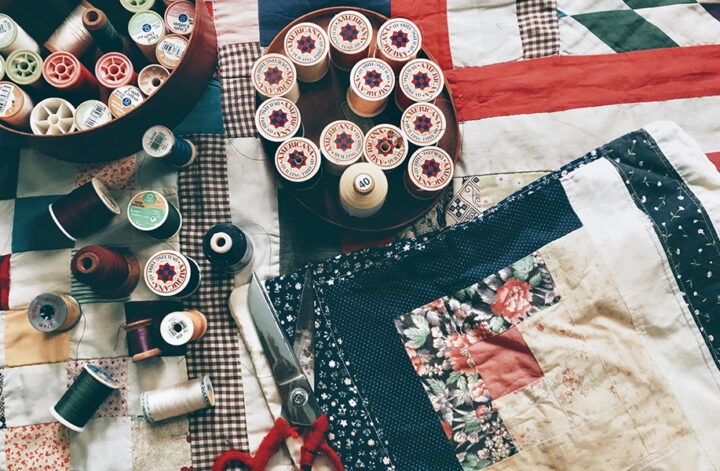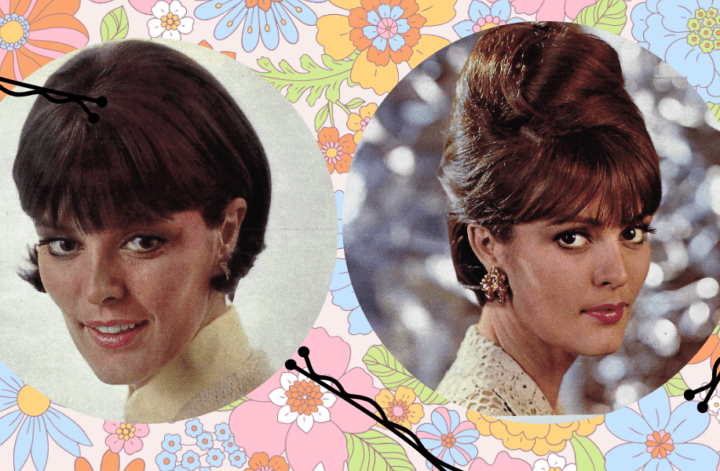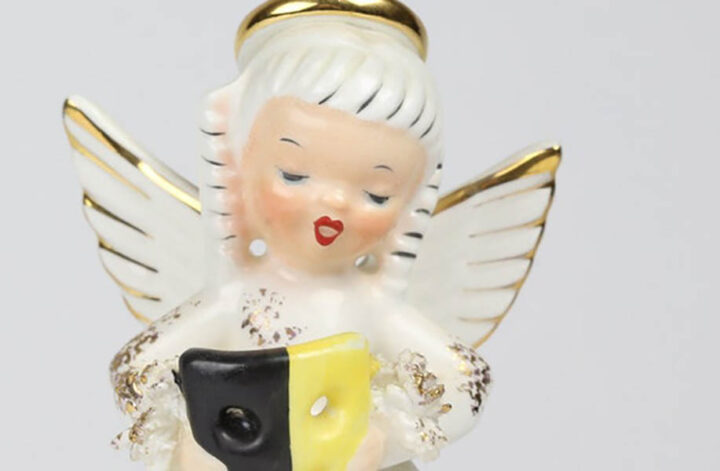We love vintage from everywhere. But there is something to be said for true American vintage classics. Things that have stood the test of time and are as treasured not was they were in their own time. The Vintage Unscripted team has searched our shops to celebrate our made in America vintage history. Part one celebrates A – M. Part two, N-Z. And there may be a few surprises along the way. After all, we are Vintage UNSCRIPTED!
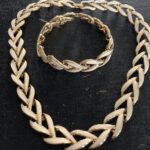 N is for Napier Jewelry Company
N is for Napier Jewelry Company
Begun in 1878 in North Attleboro, Massachusetts as the E.A. Bliss Co. it was eventually headed up by James H. Napier and renamed in 1922. Most recently known for its costume jewelry in classic designs, throughout the first part of the 20th century the company focused on their giftware lines. You may have seen a version of their Silver Plated Penguin cocktail shaker designed in 1936. Napier jewelry is still produced and remains as quality costume jewelry. Featured: Napier Enamel Choker and Bracelet Set
O is for OOAK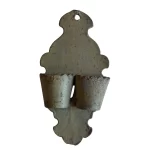
The abbreviation OOAK stands for the expression, “one of a kind.” The term originated in yachting in 1949 relating to regatta races where yacht builders were allowed to enter as many different kinds of yachts into the regatta as they produced, but no more than one of each kind (hence, “one of a kind”). In today’s world of vintage, it is applied to unique items that are made by hand. Featured: Folk Art Match Holder
P is for Paint By Number 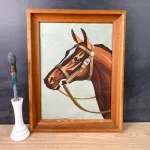
Invented in the 1950s by an artist who worked for a paint company in Detroit, MI, the paint by number kit was embraced by people who had no experience as artists and yet were able to paint their own DaVinci’s Last Supper, and scorched by critics who, well, are critics. The Craft Master company had the last laugh, having sold 12 million kits in their first four years. As for the critics point of view…the Smithsonian National Museum of History hosted an exhibit on PBNs in 2001. Featured: Picture Craft Thorobred paint by numbers 1952
Q is for QRS
QRS, the sole remaining maker of rolls for player pianos, was founded by Melville Clark in 1900. The original player pianola was invented by Edwin S. Votey in 1896, but it used a smaller roll that only utilized 65 keys. Melville Clark invented the full size roll which used all 88 keys. The player piano was a hot commodity from 1900 to the Great Depression, when it was supplanted by home radios. But per the QRS website, a revival started in the 1950s as player pianos started being restored. Featured: QRS C-121, Concerto in B-Flat Minor by Tschaikowsky
R is for Repousse
While the word itself isn’t American, the technique has been used around the world for centuries. The word literally means “pushed up” which relates to the hammering of metal from the back side pushing the design out to the front. One of the most well known examples of this technique is the Statue of Liberty. Which while being made in France is arguably very American indeed. Featured: Large Floral Brooch in Silver Repousse
S is for Salt & Pepper Shakers 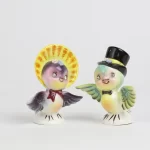
Originally salt was kept in a small bowl on the dining table and one would use a small spoon to transfer the salt to their food. The downside of this practice is that salt clumps very easily in humid conditions. In 1858 The first known salt shaker was developed by John Mason (of theMason Jar fame)and yet people continued to use their salt cellars for another half decade or more. In 1911 the Morton Salt Company added a non-clumping agent to the salt and created interest in shakers for both salt and pepper.
Salt and pepper shakers begat collecting frenzies and there is even a museum for salt pepper shakers. Post WWII designers with the aid of Japan’s ceramic industry started up the era of figural salt and pepper shakers which appealed to all ages and are quite highly prized today. Featured: Kitschy Lefton Blue Bird Couple
T is for Tramp Art 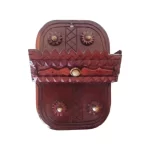
Tramp art is a form of folk art that flourished in America from the 1870’s until the 1940’s. Boxes, frames and even full sized furniture were constructed from cigar boxes and shipping crates using chipping and whittling techniques. Despite the name (which was coined in 1959), the majority of the artists were frugal factory workers, farmers and general laborers who were determined to create art out of scraps. Featured: Tramp art wall box constructed from a cigar box. Original use is assumed to be as a match holder
U is for United States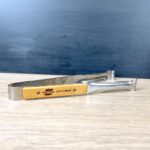
These tongs represent the United States x 2. The were made for United Airlines, founded in 1926 as Varney Air Lines. And they were made by Androck, a division of the Washburn Company, founded in the 1880s. Featured: United Airlines tongs by Androck.
V is for Vinyl 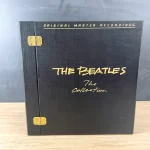
The 12″ 33 1/3 speed LP album as we know it was invented by Columbia records in 1948. Each side had a 21 minute play time, which was a revolution for music lovers. British inventor Alan Dower Blumlein filed patent for stereophonic LPs in 1931, however it was Mercury Records that made them commercially available in 1958. Other formats have come and gone, but for music lovers, vinyl endures. Featured: The Beatles Mobile Fidelity Original Master Recordings Box Set, NIB
W is for Whiting & Davis 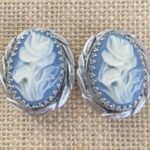
Whiting and Davis has been joining little pieces of metal into shimmering mesh handbags since the company was founded in MA in 1876. Upscale jewelry and metal mesh fashion accessories were added to their lines in the 30s. Vintage Whiting & Davis is favored by collectors for its style and timeless beauty. Featured: Vintage Whiting & Davis cameo rose earrings
X is for Columbian eXhibition 
The World’s Columbian eXhibition was held in Chicago in 1893 to celebrate the 400th anniversary of the arrival of Columbus. Cultural and technological achievements from around the world were showcased. The Ferris Wheel made it’s debut. Erik Larsen’s Devil in the White City will tell you all you want to know about the eXhibition, particularly if you like true crime stories. Featured: Columbian eXhbition US Battleship souvenir sterling spoon.
Y is for Yellowstone
Older than antique, older than vintage, Yellowstone has been attracting humans for 11,000 years, according to archaeologists. It became a national park in 1872, and became accessible by rail 11 years later. This souvenir plate is from the 1950s, one of the golden ages of road trips. Featured: Yellowstone souvenir plate
Z is for Zippers 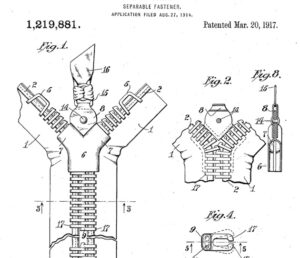
Next time you zip your fly instead of wrestle with buttons (unless you’re wearing a pair of Levi 501s), thank Gideon Sundback, head designer at the Talon Company. Although you probably should also thank Elias Howe, who in 1851 patented an impractical design for a zipperish closure. And Whitcomb Judson, who took a crack at making Howe’s design functional as a speedier boot closure in 1893–it was faster but it also didn’t stay closed. Sundback finally brought the zipper to it’s modern form and function around 1913. Astonishingly, people were skeptical and the newfangled technology didn’t catch on until B.F. Goodrich put them on their rubber galoshes and coined the name “zipper” in 1923. Read more here and here. Featured image: Sundback’s design for a “Separable Fastener” granted on 20 March, 1917 as Patent # 1,219,881
Pin It:
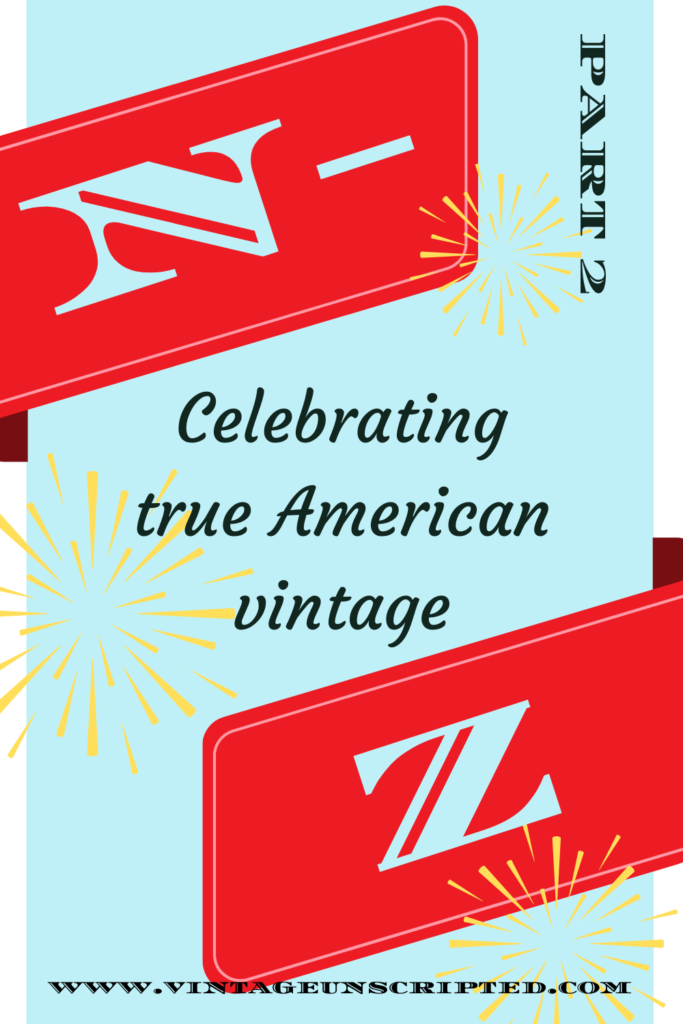
Interested in the early edition of our True American Vintage dictionary?

